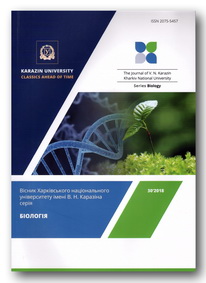Distribution of psychological types in urban adolescents (on the example of Kharkiv District)
Abstract
The materials of anonymous testing of 530 students in grades 9‒11 of six Kharkiv secondary schools, including general education, sports, gymnasiums, and a school with in-depth study of a foreign language, have been analyzed. In total, 252 boys and 278 girls aged 14‒17 years were examined. Eysenck personality questionnaire (EPQ) was used to determine the temperament type taking into account introversion and/or extraversion of the personality, as well as emotional stability. A proportion of various temperament types (sanguine, phlegmatic, choleric, and melancholic) and the indices of introversion, extraversion and ambiversion were calculated. The material was analyzed separately for each school, as well as for the Kharkiv population as a whole. The results are presented as percentages with 95 % confidence intervals. The girls showed a greater interest in the study, 43 % of them agreed to participate in the questionnaire, while only 38 % of the boys agreed to take the test. Analysis of the personal characteristics distribution within the different schools revealed a wide variation range. The proportion of psychological types of boys in various schools changed as follows: sanguine persons from 14.7 to 53.8 %, phlegmatic persons from 10.2 to 25.3 %, choleric persons from 7.7 to 38.3 %, melancholic persons from 9.5 to 23.5 %, introverts from 14.7 to 36.0 %, extroverts from 8.8 to 55.1 %, and ambiverts from 28.6 to 76.5 %. The psychotype proportion among girls was also variable. The small sample size did not allow us to draw a conclusion about the significance of differences between schools in any psychological characteristics, thus, we could not associate them with the school specialization. To increase statistical power, the data were pooled and the results were presented as population indices. The distribution of personal characteristics in boys and girls was as follows: sanguine persons 31.0 and 19.8 %, phlegmatic persons 21.0 and 19.4 %, choleric persons 27.0 and 44.2 %, melancholic persons 21.0 and 16.6 %, introverts 23.8 and 19.8 %, extroverts 32.1 and 36.0 %, ambiverts 44.1 and 44.2 %. Statistically significant gender differences were found for choleric and sanguine temperaments.
Downloads
References
Altukhov Yu.P. (1989). Genetic processes in populations. Moscow: Nauka. 328 p.
Atramentova L.A., Filiptsova O.V. Introduction to psychogenetics. Moscow: Flint: Moscow Psychological and Social Institute. 472 p.
Atramentova L.A., Luchko E.N. (2016). Aggressiveness and empathy as factors of genetic differentiation of the urban population. Genetics, 52(6), 705–712. https://doi.org/10.7868/S0016675816050027.
Efroimson V.P. (2003). Pedagogical genetics. Moscow: Tydex Co Publ. 240 p.
Filiptsova O.V., Atramentova L.A. (2014). Genetic analysis of human behavior. Germany: Palmarium Academic Publishing. 276 p.
Kazantseva A.V. (2008). Molecular genetic bases of temperament and personality traits. Abstract of the thesis for the Degree of the Cand. Biol. Sciences. Ufa. 23 p.
Konashkov V.V., Likhtenstein V.I. (2012). Determination of the type of temperament according to the test of G. Eysenck. Ekaterinburg: UrFU. 15 p.
Levontin R. (1993). Human individuality. Heredity and Environment. Moscow: Progress. 208 p.
Lewis R. (2003). Human genetics: concepts and applications. MA: McGraw-Hill. 452 p.
Luchko K.M. (2016). Aggressiveness and empathy as factors of genetic differentiation of the local population. Abstract of the thesis for the Degree of the Cand. Biol. Sciences. Kyiv. 22 p.
Onischenko V. (2009). Genetic and environmental influences on individual characteristics of temperament (according to J. Strelau) in a Polish sample. Theoretical and Experimental Psychology, 2(3), 26–32.
Plomin R., Nesselroade J.R. (1990). Behavioral genetics and personality change. Journal of Personality, 58(1), 191–220. https://doi.org/10.1111/j.1467-6494.1990.tb00913.x
Rushton J.Ph. (2011). Race, evolution and behavior: a life history perspective. Moscow: Profit Style. 416 p.
Strelau J. (1998). Temperament: a psychological perspective. New York: Plenum Press. 467 p.
Authors retain copyright of their work and grant the journal the right of its first publication under the terms of the Creative Commons Attribution License 4.0 International (CC BY 4.0), that allows others to share the work with an acknowledgement of the work's authorship.




